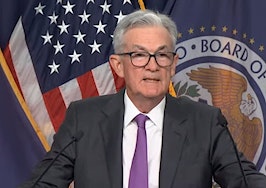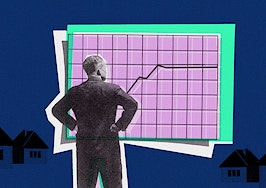In these times, double down — on your skills, on your knowledge, on you. Join us August 8-10 at Inman Connect Las Vegas to lean into the shift and learn from the best. Get your ticket now for the best price.
Homebuyer demand for purchase loans dipped for the third week in a row last week as mortgage rates continued to climb toward 7 percent on worries that the Federal Reserve has yet to tame inflation.
A weekly survey of lenders by the Mortgage Bankers Association (MBA) shows requests for purchase loans were down by a seasonally adjusted 3 percent last week when compared to the week before and 26 percent from a year ago. Applications to refinance were also down 3 percent week over week and 32 percent from a year ago.
“The decline in purchase activity was driven mainly by weaker conventional purchase application volume, as limited housing inventory and rates still close to 7 percent are crimping affordability for many potential homebuyers,” MBA Deputy Chief Economist Joel Kan said in a statement. “The refinance market continues to feel the impact of these higher rates, and applications trailed last year’s pace by over 30 percent with many homeowners not looking for refinance opportunities.”
After taking a breather in June, the Federal Reserve on July 26 approved its 11th increase in the federal funds rate since March 2022, bringing the short-term benchmark rate to the highest level since 2001.
The CME FedWatch Tool, which monitors futures markets to gauge investor sentiment of the Fed’s next moves, puts the odds that the Fed will need to hike rates again at least one more time this year at 25 percent.
In addition to raising short-term rates, the Fed has been unwinding the support it provided to mortgage markets during the coronavirus pandemic by allowing $35 billion in mortgage-backed securities and $60 billion in Treasurys to roll off its balance sheet each month as part of “quantitative tightening” that began last summer.
Fed continues trimming its balance sheet
Source: Board of Governors of the Federal Reserve System, Federal Reserve Bank of St. Louis
The Fed’s moves to trim its balance sheet could help keep mortgage rates elevated as a glut of Treasurys and mortgage-backed securities allow investors to demand higher yields.
Another recent development that could limit investor demand for Treasurys and similar investments is Fitch Ratings’ announcement that it’s downgraded the United States’ debt rating over concerns about rising deficits and ongoing political showdowns over the debt ceiling.
“In Fitch’s view, there has been a steady deterioration in standards of governance over the last 20 years, including on fiscal and debt matters, notwithstanding the June bipartisan agreement to suspend the debt limit until January 2025,” Fitch analysts said. “The repeated debt-limit political standoffs and last-minute resolutions have eroded confidence in fiscal management.
“In addition, the government lacks a medium-term fiscal framework, unlike most peers, and has a complex budgeting process. These factors, along with several economic shocks as well as tax cuts and new spending initiatives, have contributed to successive debt increases over the last decade.”
Yields on 10-year Treasurys, which often indicate where mortgage rates are headed next, have surged back above 4 percent this week on the news.
Mortgage rates near 2023 peaks
Black Knight’s Optimal Blue Mortgage Market Indices, which track daily rate lock data, show rates on 30-year fixed-rate conforming mortgages averaging 6.93 percent Tuesday, approaching a 2023 high of 7.02 percent registered on July 7.
For the week ending July 28, the MBA reported average rates for the following types of loans:
- For 30-year fixed-rate conforming mortgages (loan balances of $726,200 or less), rates averaged 6.93 percent, up from 6.87 percent the week before. With points increasing to 0.68 from 0.65 (including the origination fee) for 80 percent loan-to-value ratio (LTV) loans, the effective rate also increased.
- Rates for 30-year fixed-rate jumbo mortgages (loan balances greater than $726,200) averaged 6.89 percent, down from 6.90 percent the week before. With points decreasing to 0.58 from 0.64 (including the origination fee) for 80 percent LTV loans, the effective rate also decreased.
- For 30-year fixed-rate FHA mortgages, rates averaged 6.85 percent, up from 6.80 percent the week before. With points increasing to 1.05 from 1.03 (including the origination fee) for 80 percent LTV loans, the effective rate also increased.
- Rates for 15-year fixed-rate mortgages popular with homeowners who are refinancing averaged 6.39 percent, up from 6.37 percent the week before. With points increasing to 0.78 from 0.75 (including the origination fee) for 80 percent LTV loans, the effective rate also increased.
- For 5/1 adjustable-rate mortgages (ARMs), rates averaged 6.18 percent, up from 6.01 percent the week before. Although points decreased to 1.16 from 1.25 (including the origination fee) for 80 percent LTV loans, the effective rate also increased.
Get Inman’s Mortgage Brief Newsletter delivered right to your inbox. A weekly roundup of all the biggest news in the world of mortgages and closings delivered every Wednesday. Click here to subscribe.












